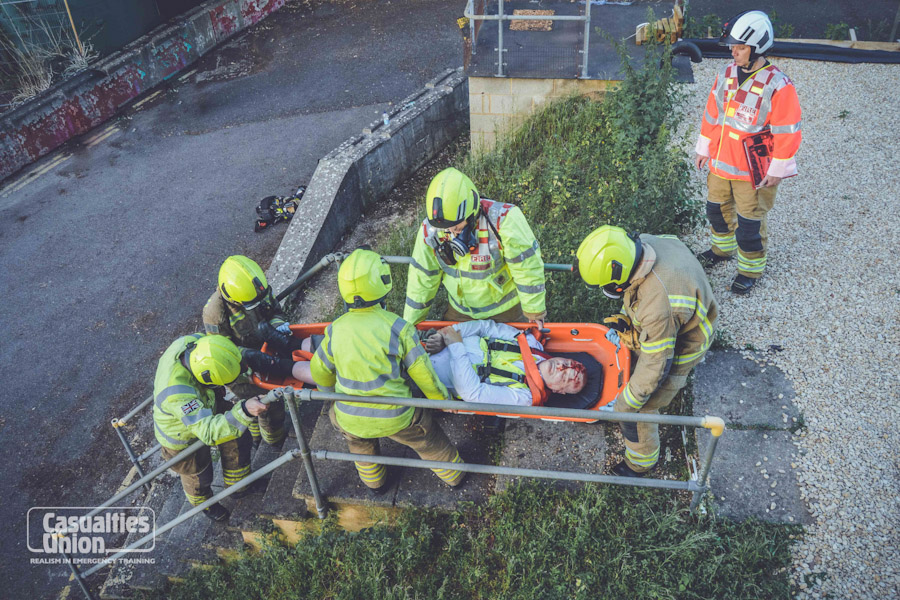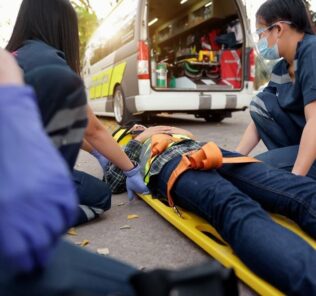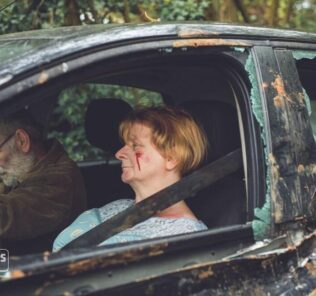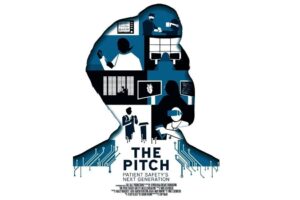Casualties Union Celebrates 80 Years of Casualty Simulation
Casualties Union is celebrating the 80th anniversary of the organization’s founding in 1942. The organization’s casualty simulation and moulage techniques have kept up with the times with the help of 300 volunteers. These volunteers across the United Kingdom have devoted their time to providing realistic healthcare simulations of casualties. This HealthySimulation.com article is not just an acknowledgment of how far Casualties Union has come, but also a celebration of the founding years and past. According to the organization, without Eric Claxton’s thoughts and the determination of the first 120 inaugural members, there may have been many hundreds of emergency response teams, first aiders, and companies who would have missed out on realistic emergency training.
“Peacetime is not a period of safety. It is true that shells, bombs, mines, and other hazards of war are not present, but even so, 1000 persons are injured every day in this country. Such a state of affairs presents a challenge that the [Casualties] Union cannot escape. A people that has struggled so bravely through total war, as has this nation, deserve the best protection from accidents that can be given and the best care and attention when, in spite of that protection, accidents occur,” stated Eric Claxton in his “Notes For The Guidance Of Members.”
According to Casualties Union, the ideology of casualty simulation and rescue training was already in Eric Claxton’s mind when he was on the search for a real bombed building as a location for his rescue school. In 1941, Hillfield, a large house that formed part of St. Andrews Convent in Leatherhead, Surrey was partly destroyed by a landmine that was dropped by parachute.
Sponsored Content:
Despite the destruction of the building, only one Nun was harmed; all other boarders and Nuns sheltering at the Convent at the time were uninjured. Hearing this news, and with the ruins now unusable by the convent, Eric Claxton set out to develop his training school. From this location, Casualties Union was founded.
After the war, the efforts to provide realistic casualty simulation did not cease. Instead, the understanding and knowledge that the skills of casualty care and rescue training could help more than just the military meant that the use of the charity’s volunteers increased. As each year passed the charity grew, and emergency response teams and first aid groups began to realize the benefits of realistic training. In 1970 the Casualty Simulation Journal noted that “it has been the year of the Major Disaster Exercise… so much have these exercises caught on that they seem to be taking a place of increasing importance as an extended form of training.”
The Early Years
In the early years, there was some emphasis on the ‘make do and mend’ attitude with costs of moulage kept low through the use of hand and homemade makeup products and prosthetics. Flicking back through the charity’s Casualty Simulation journal and magazine archive (dating back to 1946), one can read the efforts that many individuals went to create the simulated injuries required. An interesting example is for a burn or scald which produces a small group of blisters (Spring 1947): “The use of ‘pear drop’ or balsar wood cement.”
Sponsored Content:
Aside from training, first aid competitions were also extremely popular and renowned for being challenging and realistic, with one year of over 160 competition teams vying for Casualties Union’s Buxton Trophy. They were then whittled down to a small group of finalists through run-off competitions. While there are no longer first aid competitions, there are many who remember their scenarios and the awards of being part of a top first aid competition team in the UK. Those individuals talk fondly of the detailed scenarios and the effort taken to make them so.
Modern-Day Casualty Simulation
Modern-day casualty simulation has changed somewhat. Volunteers have seen advances in makeup techniques such as silicone instead of homemade ‘false tissue.’ Some of the “recipes” devised back in 1942 are still used today because of their cost-effectiveness during training and for the makeup of larger injuries.
Additionally, they enable members to practice key skills such as color and edge blending and they promote the creation of unique simulated injuries (not precast). However, with silicone and gelatine becoming more widely available, volunteers are opting to create simulated injuries that are flexible yet able to withstand multiple treatments.
The injuries that volunteers are required to portray have also significantly changed. Car travel was not as heavy as today, especially during the 1940s and 1950s. Despite the lower numbers of vehicles on the roads back then, the injuries from road traffic collisions were different. Airbags for vehicles had not yet been invented and cars were also not designed to absorb shock.
As a result, the forces transmitted from the vehicle to the driver and/or passengers resulted in occupants often being ejected from the car. Injuries such as ‘stove in the chest’ (a multiple rib injury from impact with a steering wheel), lacerations from glass, and significant head injuries were commonplace.
Furthermore, the exercises have become more complex with scenarios involving multiple casualties such as aircraft accidents, high-rise building evacuations, and multi-vehicle collisions in tunnels. Each of these exercises involves a significant amount of planning but enables the emergency response teams to test their interoperability and communications.
Ultimately, casualty simulation is also a lot safer today. With the increased emphasis on health and safety, exercises are often kept out of public areas, safety observers keep watch and the processes behind the rescue of casualties have the casualty at the forefront. Several decades ago, there would be less oversight on health and safety with volunteers being cut out of cars without any form of personal protective equipment. They would also be rescued from building ruins without the rubble being shored up, or simulated train incidents held near towns and villages without prior notice.
Outside of Casualties Union, social media has brought special effects makeup into the spotlight with individuals and special effects makeup artists creating tutorials and videos on how to create highly detailed and realistic injuries. However, the makeup is not accompanied by hours of research and learning the ins and outs of how a casualty would react to an injury, emotionally and medically.
Instead, those who attempt casualty simulation using only their makeup skills will find that they will scream out in pain from smaller injuries and not be prepared to act or react appropriately to the injuries they are required to portray or their handling. Casualties Union members still focus on learning core acting skills alongside staging and makeup to ensure that the casualties portrayed are as real as they would have been 80 years ago.
Key Achievements
Although the past 80 years have meant a lot has disappeared into history, Casualties Union still exists. Today, 300 volunteers located across the country continue to devote their time to the purposes of rescue training and casualty care within 23 units. The charity is fortunate that so many volunteers devote so much of their lives toward this purpose. Some of the charity’s members have even volunteered for more than 50 years!
But answering the question ‘what can be described as Casualties Union’s greatest achievement in its 80 years of existence?’ is difficult. Perhaps the greatest achievement is the persuasion of those who teach rescue, first aid, medicine, and allied subjects learning that theoretical knowledge and skills are never complete until put into practice using observations, communication, and hands-on experience. The simulation of trauma or medical emergencies by skilled, trained actors who specialize in this field presents the practitioners with realism so that they can make errors and learn from them without risking harm to true victims.
More About Casualties Union
Casualties Union is a charity whose volunteers spare time to train and practice casualty simulation. Many of us are first-aiders, and some are medical professionals. The organization shares the conviction that rescue, first aid, and medical training are improved by having casualties and patients who look and behave as realistically as possible. The goal is to advance the field for the public benefit of education and training in first aid, the treatment of illness, nursing, rescue, accident prevention, care in the community, and similar activities, particularly through casualty simulation.
Casualties Union creates the illusion of illness or injury by makeup, from a faint to a heart attack, or from a splinter to a protruding broken bone. We study how the victim would behave, acting with appropriate posture, facial expression, and speech. The organization responds to treatment by providing vital feedback both during the scenarios or role-play and in any debrief session afterward.
Learn more about Casualties Union
Today’s article was guest authored by Sarah Martin, Volunteer and Publicity Officer at Casualties Union.
Have a story to share with the global healthcare simulation community? Submit your simulation news and resources here!
Sponsored Content:
















